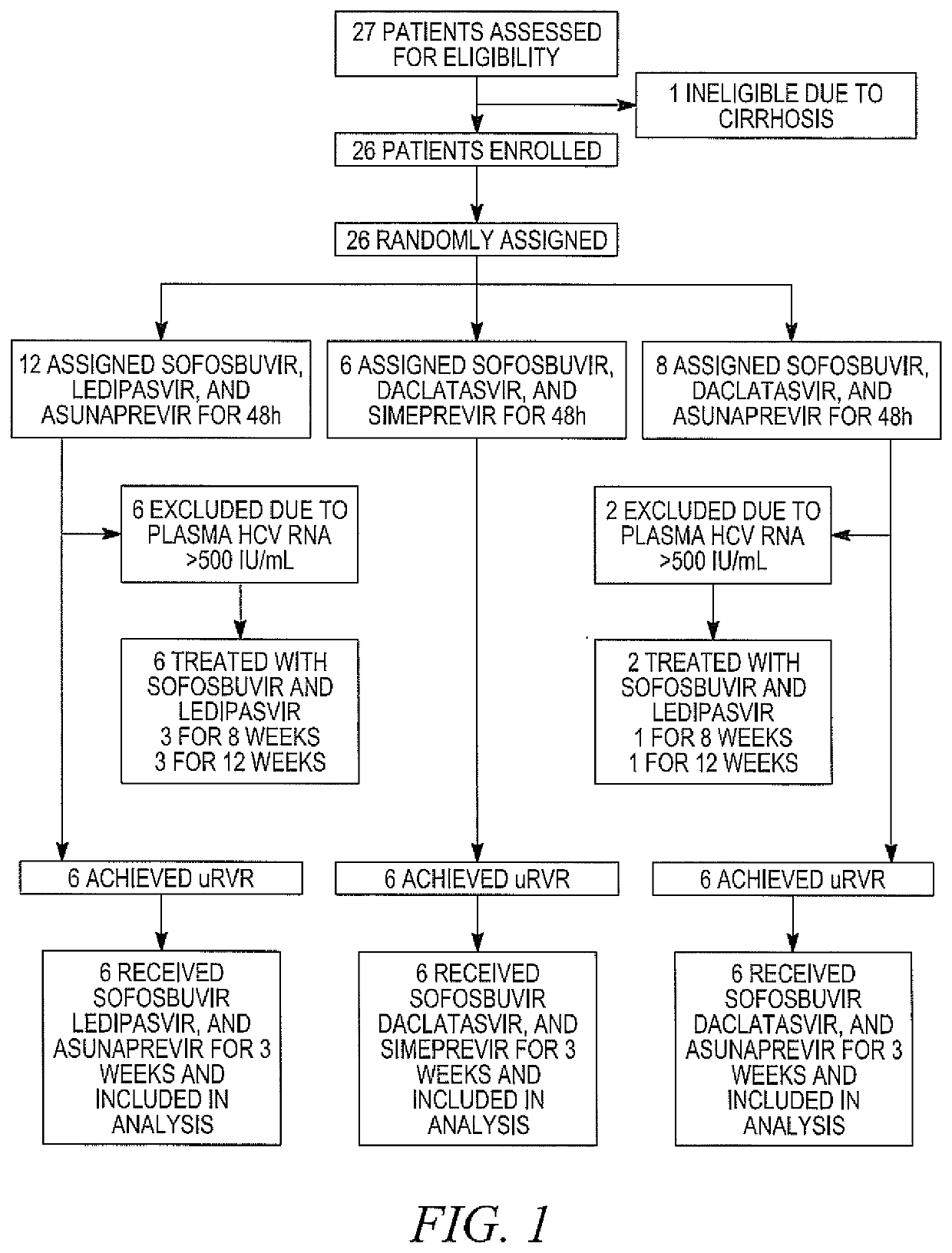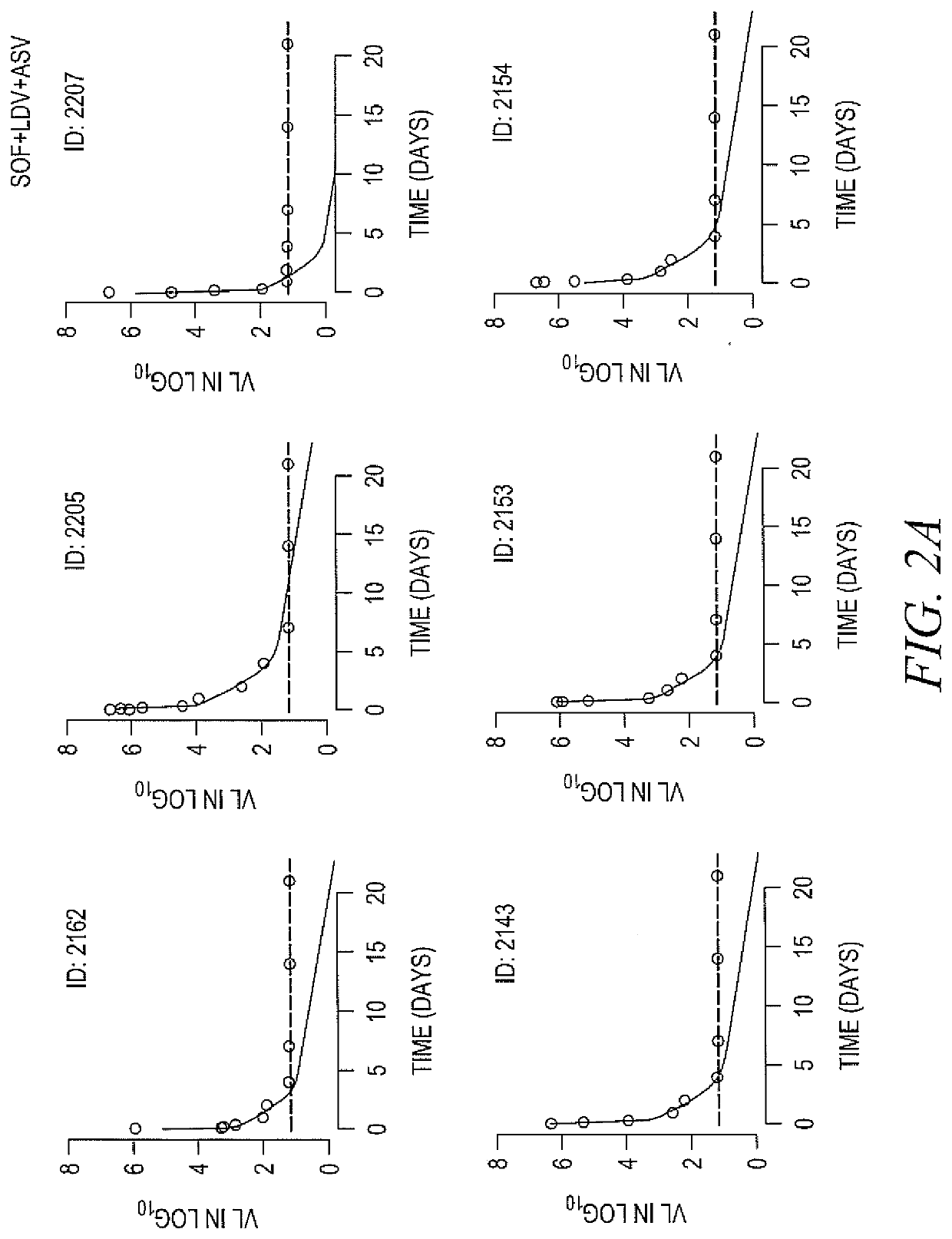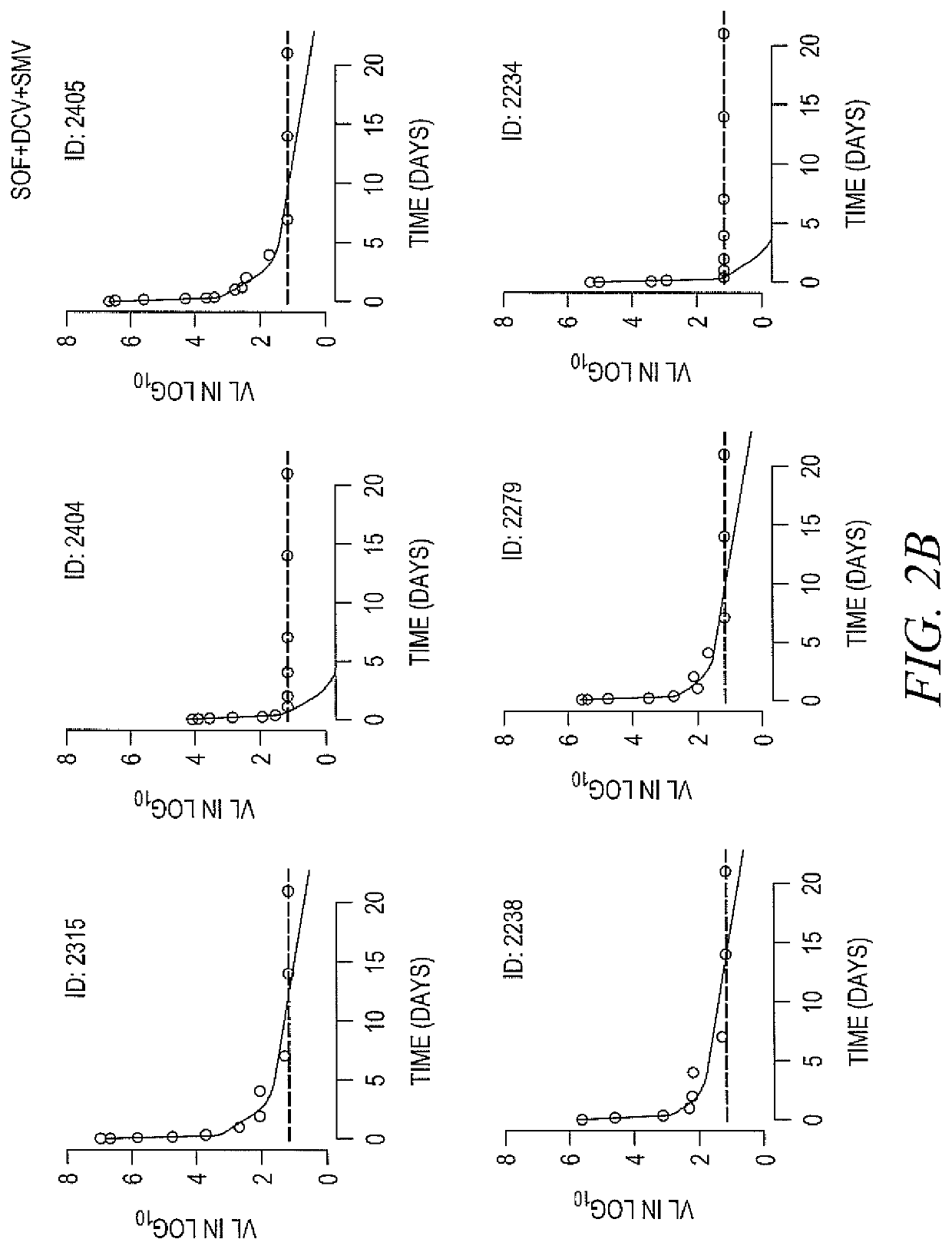Response-guided hcv therapy
a technology of hcv and response, applied in the field of formulations, can solve the problems of increasing the risk of developing cirrhosis of the liver and hepatocellular carcinoma, ineffective in up to 50% of patients, and long treatment course, and achieve the effect of clearing the virus more effectively
- Summary
- Abstract
- Description
- Claims
- Application Information
AI Technical Summary
Benefits of technology
Problems solved by technology
Method used
Image
Examples
example 1
and Safety of 3-Week Response-Guided Triple Direct-Acting Antiviral Therapy for Chronic Hepatitis C Infection: a Phase 2, Open-Label, Proof-of-Concept Study
[0162]Summary:
[0163]DAAs have a high cure rate and favorable tolerability in persons infected with hepatitis C virus (HCV). However, shorter courses could improve adherence, affordability and increase DAAs accessibility. We postulated that adding an NS3 protease inhibitor to dual NS5A-NS5B (nucleoside) inhibitors would enhance antiviral efficacy and reduce treatment duration to 3 weeks (wks) in individuals with a rapid virologic response (RVR), defined as plasma HCV RNA<500 IU / mL by day 2. Accordingly, the purpose of the study was to examine the antiviral efficacy and safety of 3 weeks of response-guided therapy with an NS3 protease inhibitor and dual NS5A inhibitor-NS5B nucleotide analogue, so as to shorten the course of direct-acting antiviral agents for chronic hepatitis C virus (HCV) infection.
[0164]In this pilot, response gu...
PUM
 Login to View More
Login to View More Abstract
Description
Claims
Application Information
 Login to View More
Login to View More - R&D
- Intellectual Property
- Life Sciences
- Materials
- Tech Scout
- Unparalleled Data Quality
- Higher Quality Content
- 60% Fewer Hallucinations
Browse by: Latest US Patents, China's latest patents, Technical Efficacy Thesaurus, Application Domain, Technology Topic, Popular Technical Reports.
© 2025 PatSnap. All rights reserved.Legal|Privacy policy|Modern Slavery Act Transparency Statement|Sitemap|About US| Contact US: help@patsnap.com



